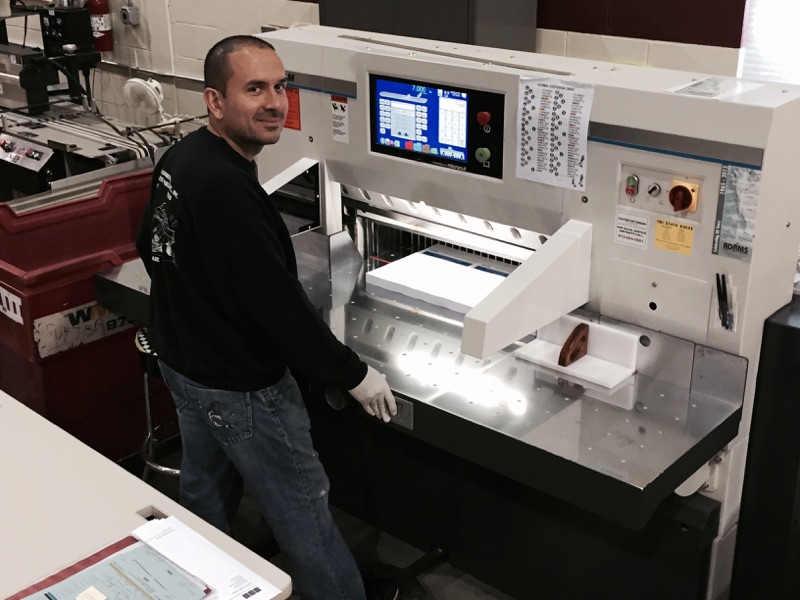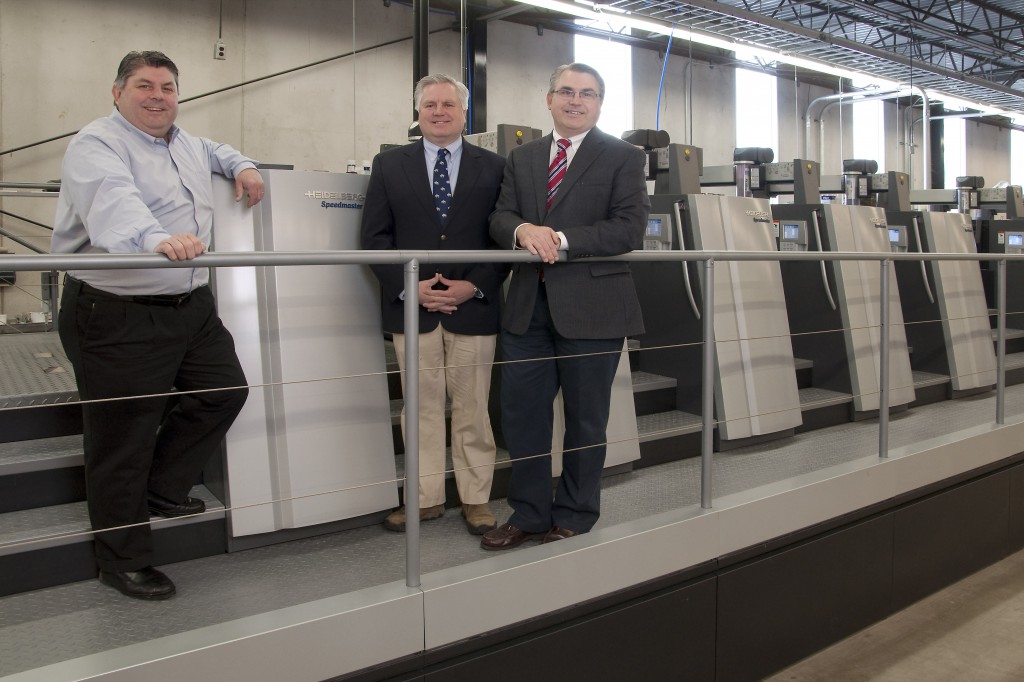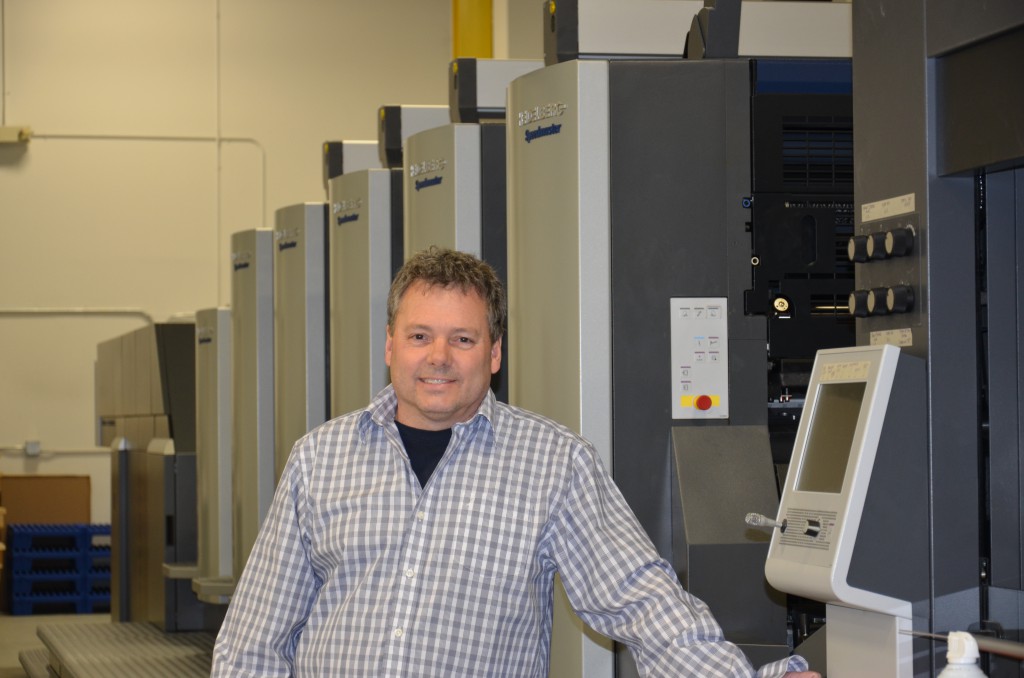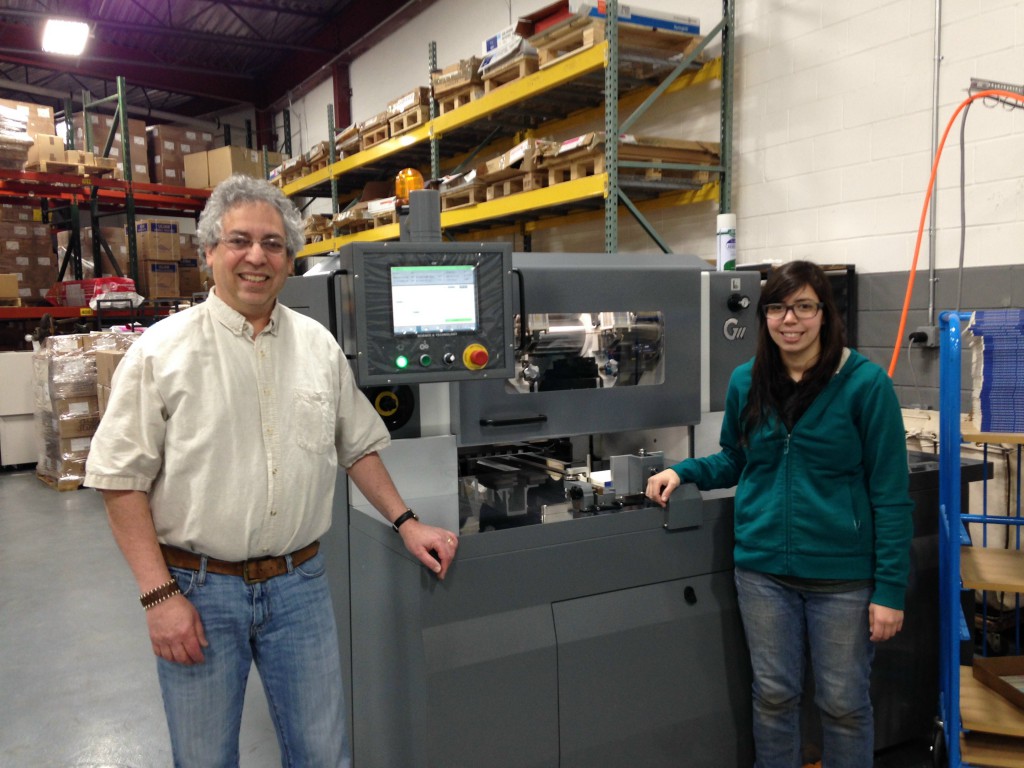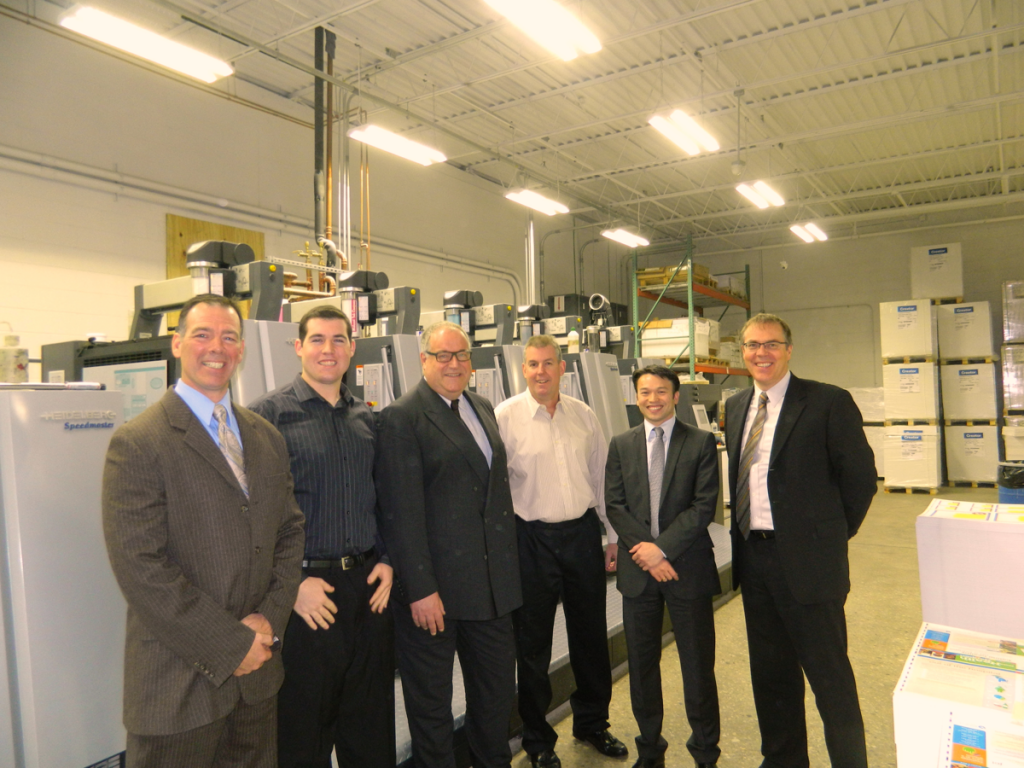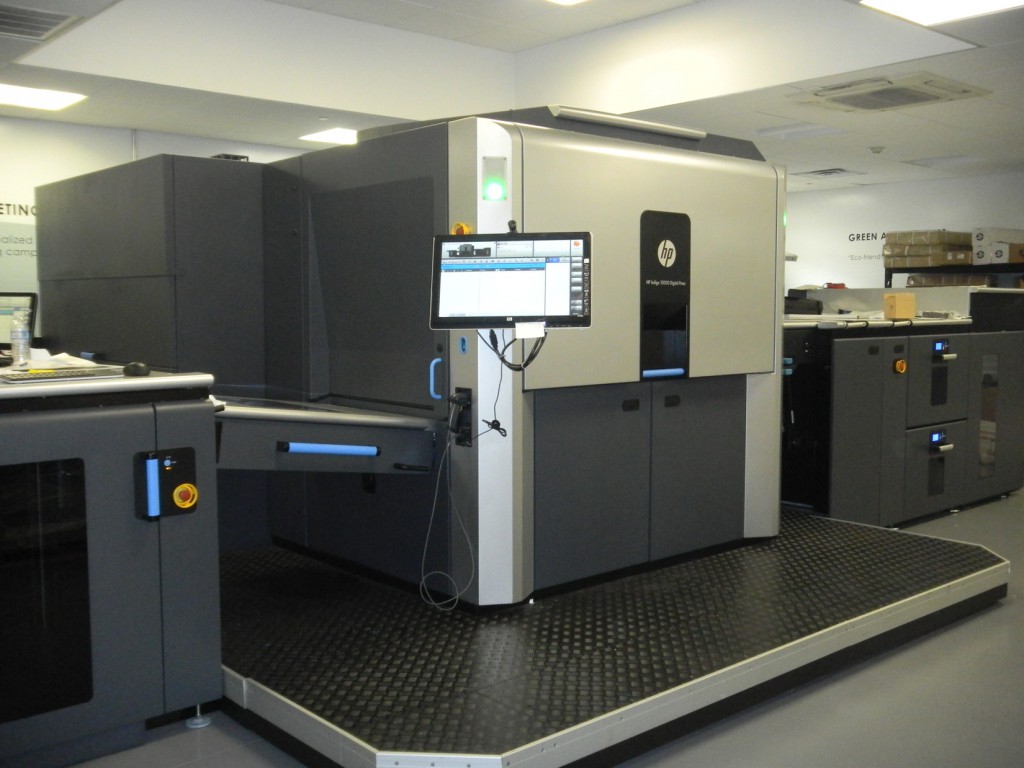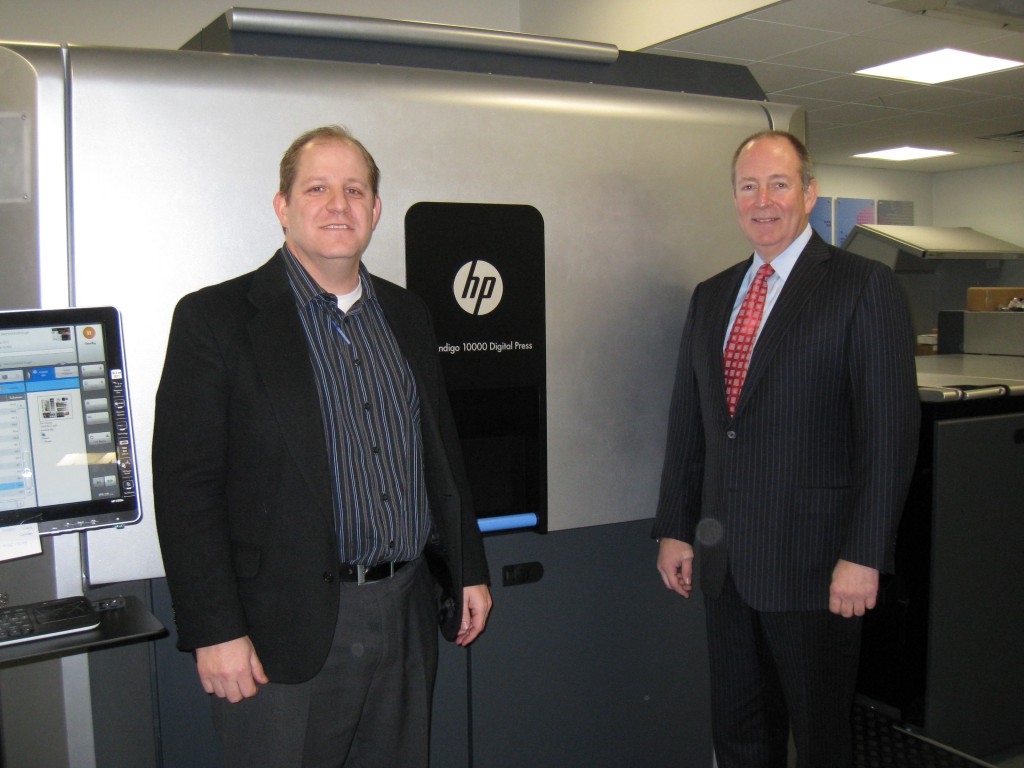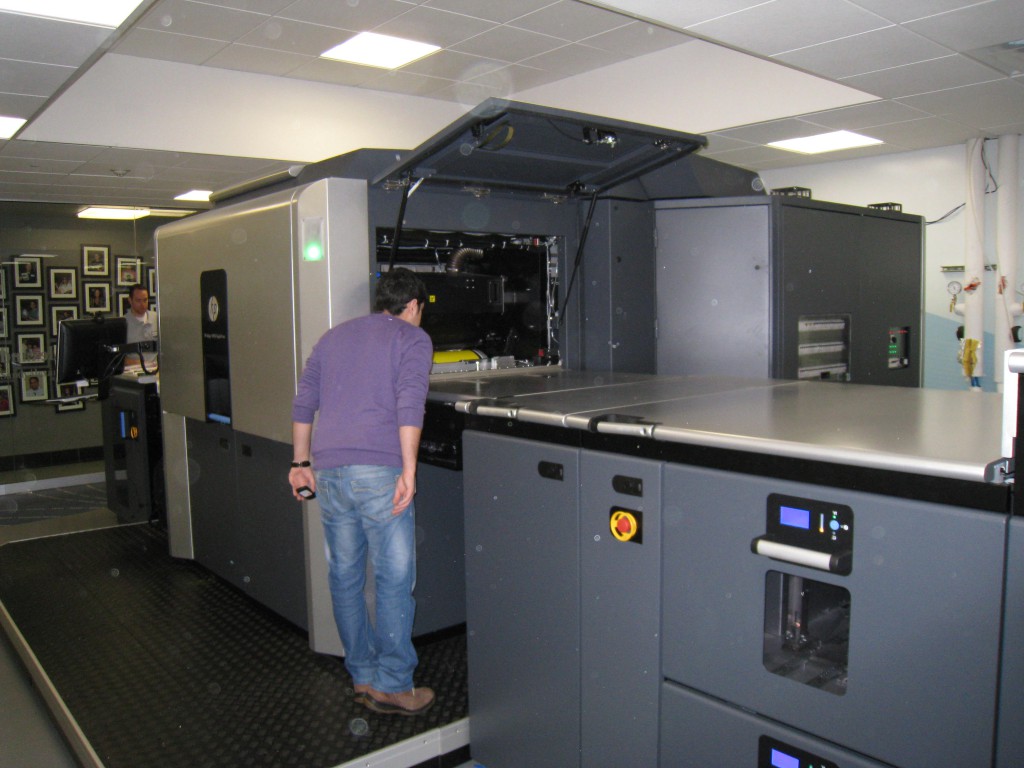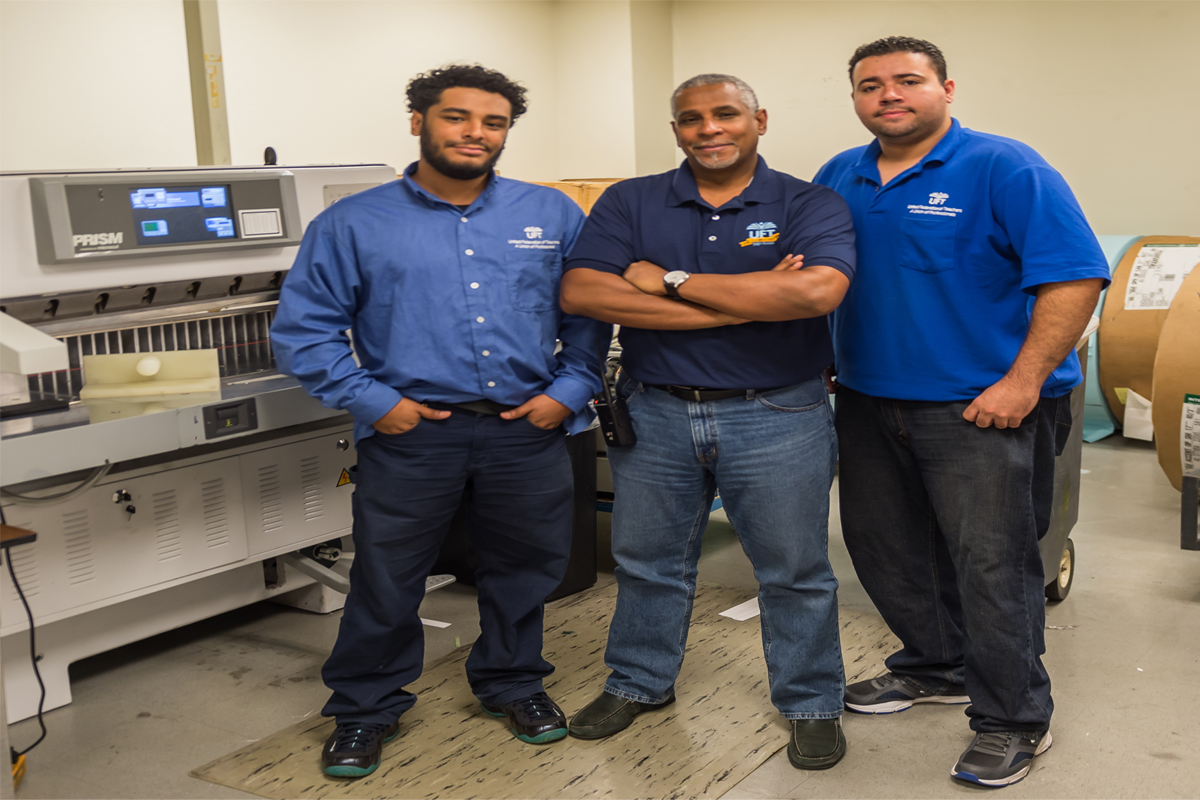 Oscar Rivera (center) with operators Gabriel Rivera (left) and Steve Rodriguez next to their Colter & Peterson Prism paper cutter.
Oscar Rivera (center) with operators Gabriel Rivera (left) and Steve Rodriguez next to their Colter & Peterson Prism paper cutter.
Days at the in-plant operation that Oscar Rivera manages for the United Federation of Teachers (UFT) rival the bustling atmosphere of the shop’s environs in lower Manhattan. The Printing and Mail Department has transformed itself in the last decade, adding an array of equipment to handle an ever-increasing amount of work. The finishing department has benefitted as well, having installed a 32″ Prism paper cutter from Colter & Peterson earlier this year to help speed up the process of getting work out the door to over 200,000 members.
“The Prism is a workhorse for us,” says Rivera, who will mark 15 years as the operation’s production manager in November. “I remember the afternoon it was delivered. A flatbed truck pulls up with this heavy, 4,000-lb. cutter, and I thought it was going to be a big production. But they got it off the truck in a snap, and we were up and cutting the following morning.”
Rivera is quick to credit Rick Fassano, his local Colter & Peterson dealer at Summit Offset Service, for recommending the Prism paper cutter. Fassano had placed a 27″ Prism PC paper cutter last year at the New York Stock Exchange, a short walk from UFT’s offices.
“I’ve known Rick for 40 years when I first started in the industry as a hand typesetter, and before I moved into offset. He’s really good and always on time with getting equipment to us,” Rivera says. “Late last year, we were decommissioning an old Challenge, so we needed a new cutter. I spoke with Rick and he gave me some options to consider, but the Prism was at the top of his list.”
The 32″ Prism joins an impressive list of equipment at the UFT in-plant. In addition to web and sheetfed presses, the digital side includes various Konica Minolta bizhub presses for black and white and color work. Rivera and his team count on Epson Stylus, HP DesignJet and KIP wide format machines to handle the signage and large graphics work. With all of that firepower, the Prism gets a workout.
“The Challenge cutter wasn’t programmable and there was a lot of stopping and starting,” says Rivera, who manages a staff of 16. “The Prism is programmable and a better, more efficient product. We set the cut, cut it, and then go on to the next one. The table bed has air running under it to lift the paper, so it makes us much faster than before.
“We go full tilt every day. A lot of our work is done on 12″ x 18″ sheets that we trim down to 11″ x 17″. Business cards, letterhead, invitations, you name it. We print everything from a few hundred up to 265,000 per run, which includes the full UFT membership.”
As in any operation, Rivera’s team at times will experience busier than average periods.
“No two days are alike. Sometimes it looks like ants at a rainy picnic in here,” Rivera says. “Summer is our downtime, where we catch up on fill-in work. Once the school year begins in mid-August, the Prism cuts 40 to 50 jobs a day. We stay very busy until Thanksgiving, then do a lot of holiday related work until the end of the year.
“When everyone returns in early January, we go full tilt through the end of April. The first two weeks of May, we print many certificates of achievement, middle school promotional certificates and other recognition work.”
Most managers want what’s best for the team. For Rivera, there were other selling points to the Prism that have met all of his expectations.
“This cutter has made life easier for them. That’s great because they work very hard and stay busy with many other things, so we don’t usually have to worry about the Prism,” Rivera says. “It is a very quiet machine, and you rarely hear it.
“I also like the safety features. It has an electronic beam and some of our operators were tripping it by leaning forward as it was cutting. So the machine would just stop. Once they got used to it and changed their behavior, the team became even more productive.”
In-Plant Graphics magazine published a detailed profile of the UFT in-plant last year. Read it here.

